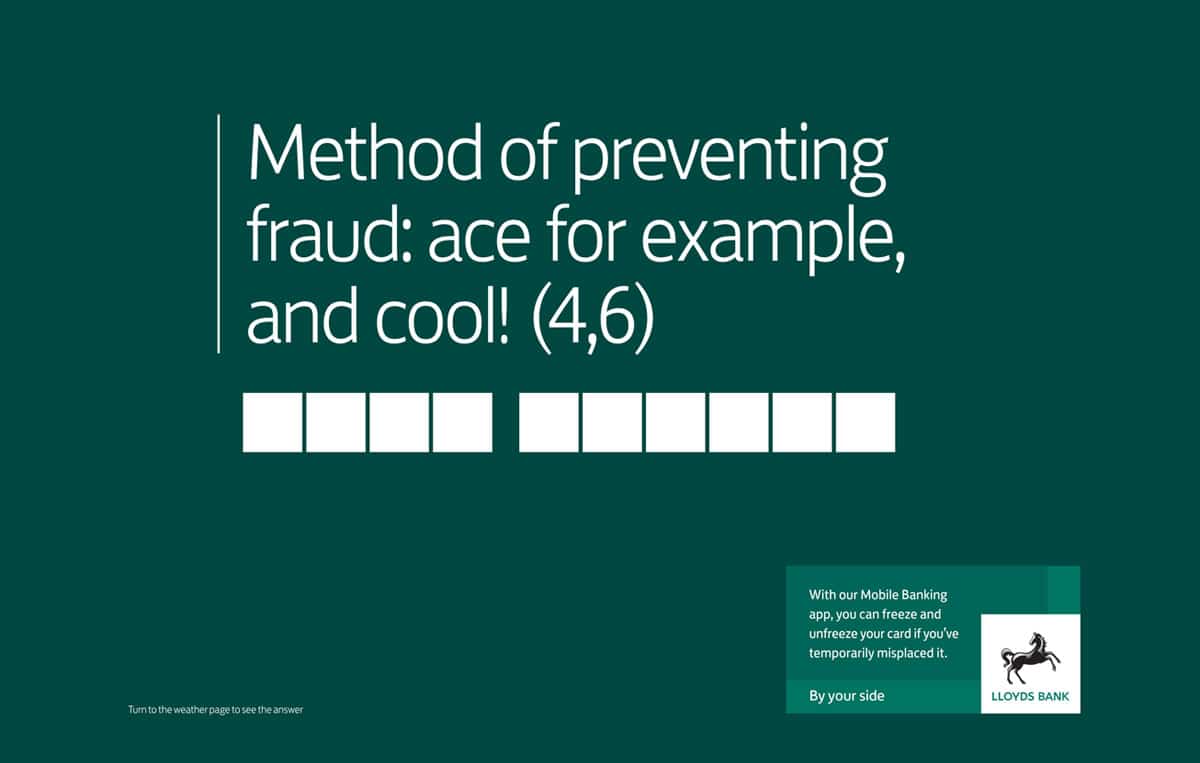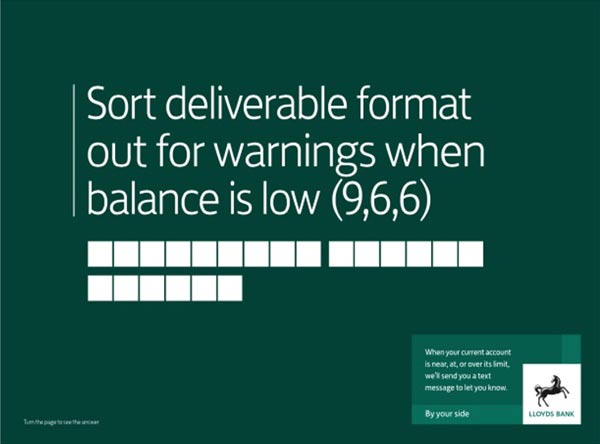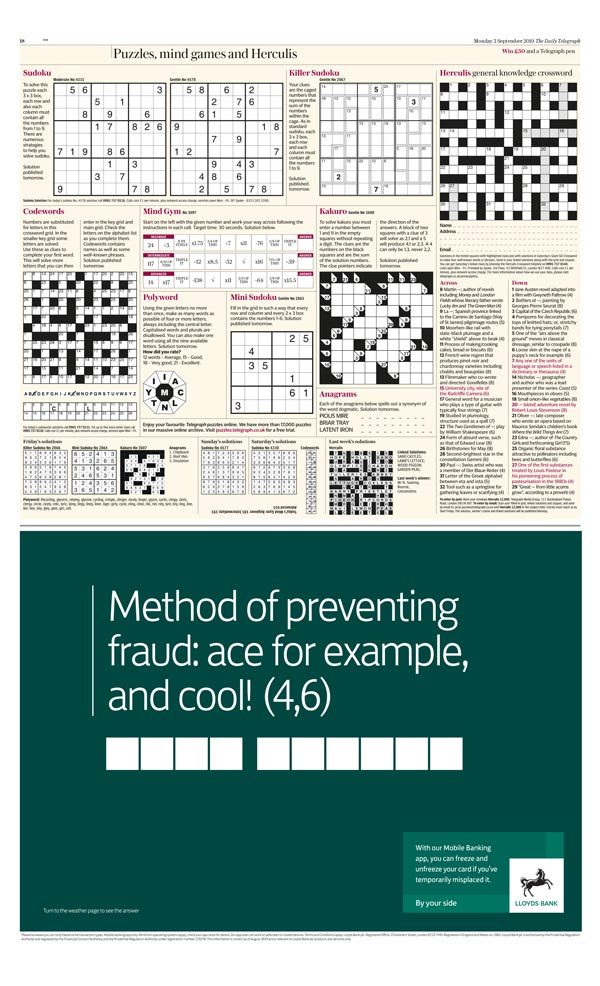Case study – Objective: Prompt action
Lloyds Bank’s strategic priority is to help its customers feel in control of their banking. It does this through its market-leading app, but older customers were not engaging with it. The challenge was to get this group of affluent, educated consumers to download and use the app. So, Lloyds took an old-fashioned 15 x 15 square print feature and made it into an attitude-changing branding device. MediaCom partnered with The Daily Telegraph to create a series of crossword-style ads, which revealed the app’s handy features as answers.
A key marketing focus for Lloyds is retaining its highest value customers. One of Lloyds’ most valuable segments is financially sophisticated older customers with high-value assets. As such, The Telegraph was the ideal partner as the most-read newspaper for the older, affluent segment. And with a high dwell time on puzzle pages, it provided the perfect contextual environment, with the editorial team writing the clues for their readers. Appealing to the target audience’s intellect instead of infantilising it worked. The idea was that if they could solve the cryptic crossword clues, an app would be easy. Trust is an important factor when asking customers to try something new and older audiences trust print. In fact, Newsworks’ trust research from 2017 shows that 76% of readers trust the quality newspaper they read.
By adding one element of editorial into a traditional ad space, the brand advertising captivated readers. After seeing the ad, 56% of readers visited the Lloyds Bank website and 51% learned more about the features. Crucially, 44% used or downloaded the app.
The Lloyds Bank ‘Crossword Clues’ campaign really shone through. It had a clear objective and target audience, then developed a creative idea that completely spoke to that audience and blurred the lines between journalism and marketing
David Parslow, Group Marketing Director, TalkTalk



